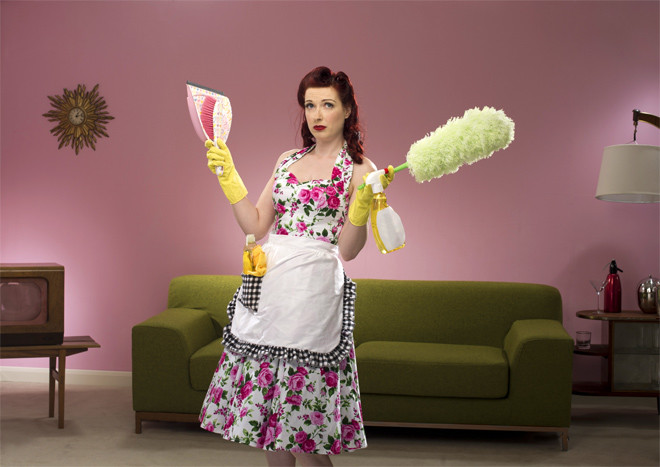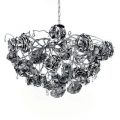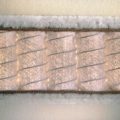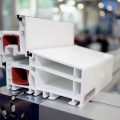In the end, everything is in our hands. Literally. After all, 80% of infections are transmitted through the hands. So wash your hands and get ready to wage your own war with microbes. Photo: Getty
Photo: Getty
1. Sink in the kitchen
The kitchen sink is much dirtier than its sister inbathroom. The most dangerous area is the drain pipe. Bacteria have also taken a liking to your dishwashing sponges, the sink itself, and the faucet. risk: wash your kitchen countertop and sink with antibacterial cleaners. Especially after cooking meat, peeling raw vegetables and fruits, which contain many potential pathogens such as salmonella, campylobacter, and E. coli. Wash your hands thoroughly in warm soapy water for 20 seconds. Change sponges once a week or disinfect them in the dishwasher: the drying cycle kills 99.9% of bacteria. You can also use a microwave for the same purpose. As for the drain, disinfect it twice a week: pour a tablespoon of chlorine into the drain hole and rinse it with 1 liter of water.
2. Toilets
It is a well-known fact that toilets (especially inpublic places) are teeming with a huge number of bacteria, but experts are unanimous: even greater danger lies, for example, in toilets on airplanes. The small drain hole of the sink does little to promote cleanliness. In addition, the volcano-like flush of the toilet has a habit of ejecting tiny particles of contents into the air, covering everything around with harmful bacteria. Reduce the risk: try not to touch surfaces in toilets. Use paper napkins for the toilet seat, for handling its lid, flush button and door handle. After using the toilet, wash and dry your hands thoroughly. Close the toilet lid before pressing the flush button. If there is no lid, press the button and quickly leave this haven of infections. At home, try to keep your bathroom and toilet room clean. It would not be superfluous to carry out a general wet cleaning using special cleaning products at least once every three days.
3. Wet underwear
Taking wet underwear out of the washing machinemachine, you also get E. coli as a “bonus”. One dirty item spreads bacteria throughout the laundry, and they also remain in the drum of the washing machine. Reduce the risk: use the boiling program (150 ° C) for washing underwear. Wash whites with bleach (for whites, not colors - the latter is weaker), which kills 99.9% of bacteria. Wash underwear separately (each pair of dirty underwear contains approximately 1 g of excrement), dry in the dryer for at least 45 minutes. Wash your hands after washing and hanging up wet laundry.
4. Bathtub
Brutal Blow:The place you go to finally get clean is not really clean. According to an American study, 26% of the bathtubs tested were found to contain staph bacteria, a common cause of serious skin infections. The same finding was expected by scientists in only 6% of trash cans! You wash away germs and viruses from your body, but they remain in the bathtub, because its damp environment is ideal for the reproduction of bacteria. Reduce the risk: at least once a week, wash the bathtub with a disinfectant. Then rinse off the cleaning agent thoroughly and wipe the bathtub dry. If you leave it damp, the germs are likely to survive. If someone in your family has skin infections, the bathtub should be washed with a solution of 2 tablespoons of chlorine per liter of water.
5. Phones
This message is enough to make youDial an emergency number: Our phones, especially office phones, are real collections of bacteria and viruses. The desk, computer keyboard and mouse are not far behind. All phones, including cell phones, can be quite dangerous, because what is on a person’s tongue ends up on the phone receiver. Reduce the risk: wipe down your desk, phone and keyboard with antibacterial wipes from time to time.
6. TV remote control
What is the first thing you do when you enter a house?You probably grab the remote control and turn on the TV. How dirty is it? A recent study tested various surfaces for viruses. As a result, they were found on the TV remote, door handles, light switches, writing pens and faucets. Reduce the risk: wipe the TV remote, air conditioner remote and all the listed “dangerous” objects with disinfectant.
7. Bags
Recent studies have shown that womenHandbags are infested with bacteria. These include Pseudomonas aeruginosa (which can cause eye infections), staph bacteria, salmonella, and E. coli. Reduce your risk: Instead of throwing your bag on the floor, always hang it on a hook, especially in public restrooms. And keep it away from food counters. Choose a bag made of leather or vinyl—these materials are not as popular with bacteria and infections as fabric.
8. Carts and baskets in supermarkets
Saliva, bacteria and feces are just a fewsubstances found on shopping cart handles. Daily physical abuse, raw food – none of this adds to the sterility of shopping carts. Reduce the risk: before handling baskets or a cart, wipe the handle with a disinfectant wipe or gel, which should always be in your purse. Although, of course, no one forbids you to kick the cart in front of you with your feet.
9. Children's playgrounds
It's hard to find a more elegant way to express this,But be that as it may: Little kids have a habit of oozing bodily fluids and spreading them around. When researchers tested playgrounds, they found blood, mucus, saliva, and urine. Combine these findings with the fact that kids stick their fingers in their mouths and noses far more often than most adults, and it’s easy to see why your little one (and maybe even their mom or dad) is sniffling. Reduce the risk: Always keep antibacterial wipes or gel in your purse. Wipe your child’s hands with them a couple of times during a visit to the park, and always before giving them a cookie or an apple. Choose warm, sunny days to play outside: UV light is an effective disinfectant. And remember: Most bacteria don’t survive on hot, dry surfaces.
10. Trading and Banking Machines
Money isn't the only thing that comes into your lifehands from an ATM. Their buttons are dirtier than the door handles of a public toilet. These machines are rarely cleaned, but they are often used by a variety of people, which is a perfect breeding ground for bacteria. Reduce the risk: disinfect your hands with gel or wipes after using the machine. We recommend doing the same every time you handle money, a known carrier of germs.
11. Rugs and fitness equipment in sports clubs
Antibiotic-resistant staph wasfound on yoga mats and exercise machines, as well as on school mats. It cannot be ruled out that something similar could happen in sports and health centers, sports schools and fitness clubs. Reduce the risk: before training, wipe the handles and seat of the exercise machine with antibacterial gel. Bring your own yoga mat or cover the club's with your towel. Be sure to take a shower after training to wash off harmful bacteria, by the way, this same staph is not a fan of water procedures either.









